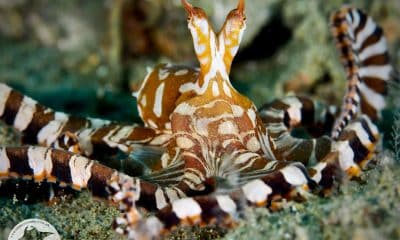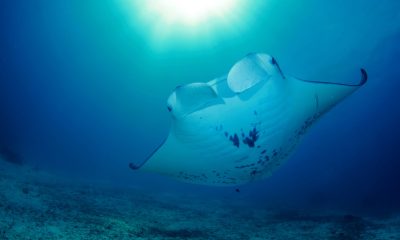News
Two new BHS damsels named to honor two diving divas
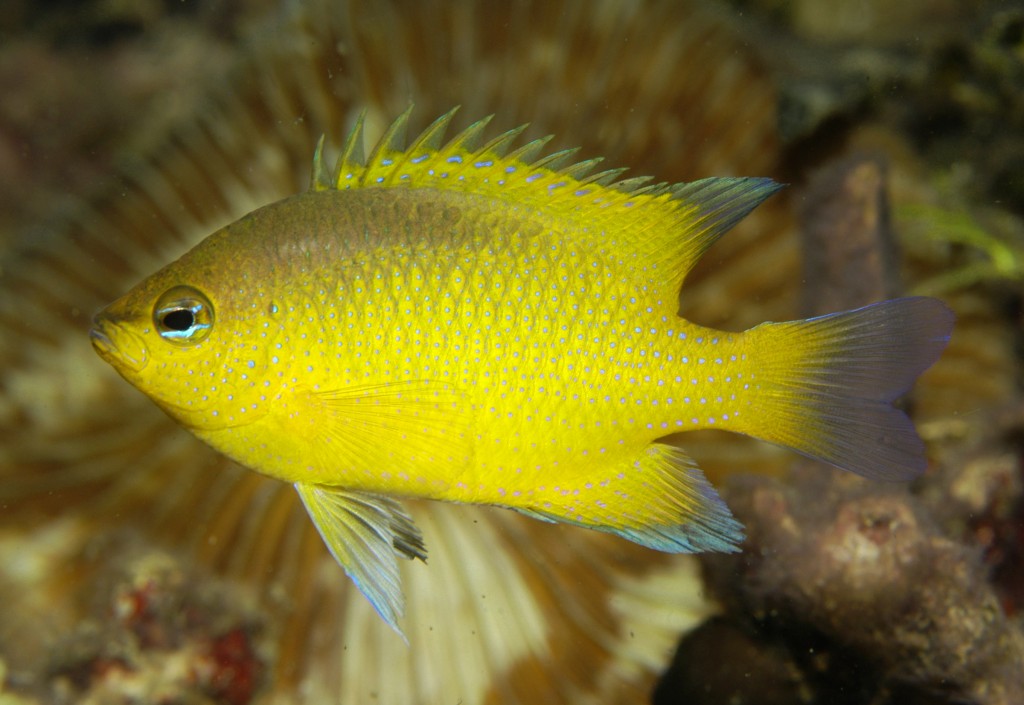
It’s an honor and a great pleasure to announce the recent description of two new BHS endemic damselfishes, named after diving divas Maurine Shimlock and Dr. Ellen Gritz. The two beautiful new fish species were previously considered geographic color variants of the damselfish Chrysiptera oxycephala, but genetic analysis by our colleague Dita Cahyani from the Indonesian Biodiversity Research Centre has shown conclusively that the Cendrawasih Bay and Raja Ampat populations actually represent separate species.
With this genetic evidence in hand, my colleague Gerry Allen and I were delighted to describe the gorgeous lemon-yellow damsel from Cendrawasih Bay after our dear friend Maurine Shimlock. Given Maurine’s tireless efforts to explore and promote the Bird’s Head, and especially Cendrawasih Bay, naming a Cendrawasih endemic after her seemed a most fitting tribute! As an added bonus, this fish is common on the shallow reefs of Cendrawasih – which means Maurine won’t need to dive to 70m (where many of our new species finds come from nowadays!) to see her piscine namesake.
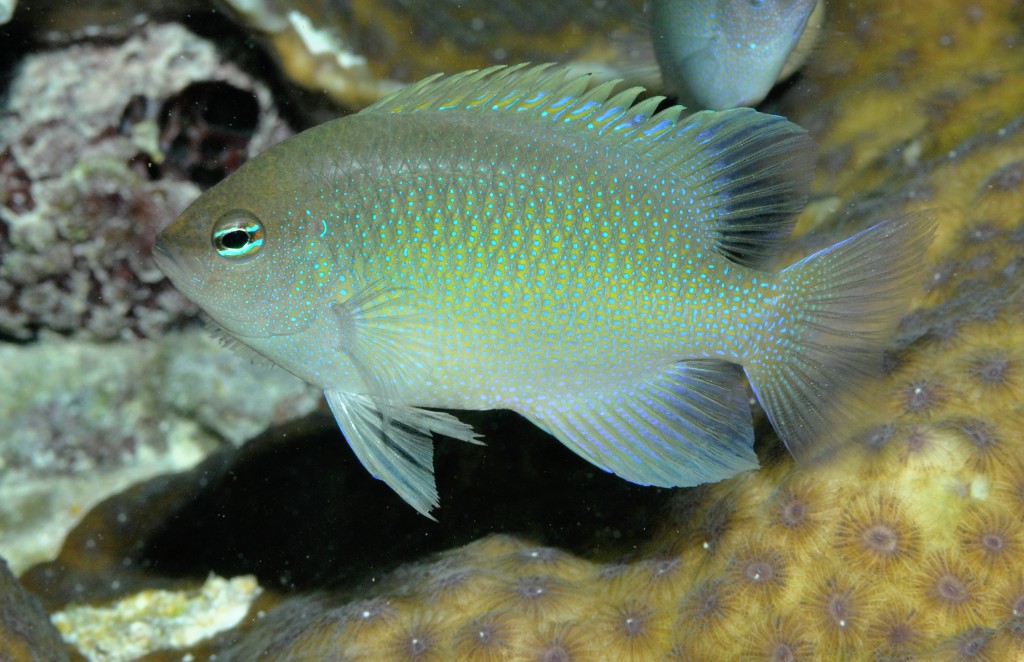
Chrysiptera ellenae – Ellen’s damselfish, found on shallow protected reefs of Raja Ampat including Wayag and Ayau lagoons, Kri lagoon, and the karst channels of SE Misool. MV Erdmann photo.
Similarly, we were also very pleased to be able to name the new Raja Ampat damsel Chrysiptera ellenae in honor of Dr. Ellen Gritz – a world-renowned cancer researcher who also happens to be a good friend and a generous supporter of the Bird’s Head Seascape. This seemed a particularly appropriate fish to name after Ellen, given its beautiful blue coloration (Ellen’s favorite!) and the fact that it is a sibling species to C. maurinae (Maurine and Ellen have been diving buddies for years!).
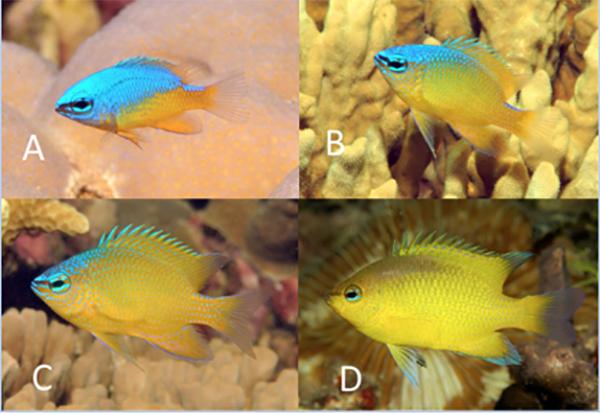
Life history stages of C. maurinae, where the neon blue crest in the juvenile gradually disappears to reveal a gorgeous lemon yellow adult. Photos GR Allen.
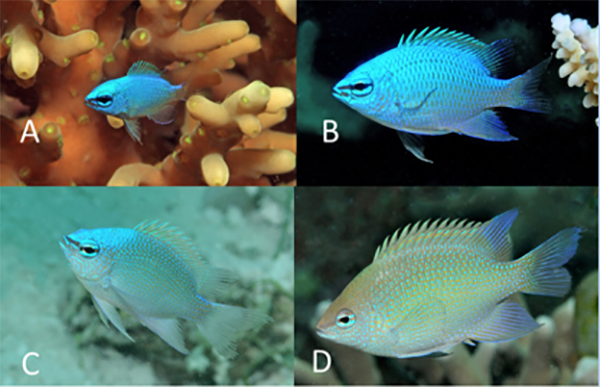
Life history stages of C. ellenae, showing the gradual change from neon blue juvenile to greenish-blue adults. Photos GR Allen.
Both of these new species are found in close association with branching coral colonies on shallow sheltered reefs. This includes the majority of Cendrawasih’s mainland reefs for C. maurinae, and mostly lagoonal areas (such as the lagoons of Wayag, Ayau, Kri and SE Misool’s Mesempta karst channels) for C. ellenae in Raja Ampat. Both species also show significant colour changes over the course of their lifetime; C. maurinae has a neon blue upper body and bright yellow lower half as a juvenile, but over time the blue gradually disappears and the adults are bright yellow. By comparison, C. ellenae exhibits a striking neon blue juvenile phase, gradually changing to a more greenish-blue as it matures.
With the addition of these two new species, the total count for the Bird’s Head rises to 1759 reef fish species recorded, including 1563 species from Raja Ampat, 1044 from Cendrawasih, and 1053 from the FakFak-Kaimana coastline. Perhaps 2016 will be the year we break the 1800 species mark for the Bird’s Head! In the meantime, if you’re fortunate enough to be diving in Raja Ampat or Cendrawasih this year, keep a lookout for the latest two endemic fishes from the Bird’s Head!
For more information about Bird’s Head Seascape visit www.birdsheadseascape.com.
News
Dive Worldwide Announces Bite-Back as its Charity of the Year

Over the next 12 months, specialist scuba holiday company Dive Worldwide will be supporting Bite-Back Shark & Marine Conservation with donations collected from client bookings to any one of its stunning dive destinations around the world. The independently-owned operator expects to raise £3000 for the UK charity.
Manager at Dive Worldwide, Phil North, said: “We’re especially excited to work with Bite-Back and support its intelligent, creative and results-driven campaigns to end the UK trade in shark products and prompt a change in attitudes to the ocean’s most maligned inhabitant.”
Bite-Back is running campaigns to hold the media to account on the way it reports shark news along with a brand new nationwide education programme. Last year the charity was credited for spearheading a UK ban on the import and export of shark fins.
Campaign director at Bite-Back, Graham Buckingham, said: “We’re enormously grateful to Dive Worldwide for choosing to support Bite-Back. The company’s commitment to conservation helps set it apart from other tour operators and we’re certain its clients admire and respect that policy. For us, the affiliation is huge and helps us look to the future with confidence we can deliver against key conservation programmes.”
To launch the fundraising initiative, Phil North presented Graham Buckingham with a cheque for £1,000.
Visit Dive Worldwide to discover its diverse range of international scuba adventures and visit Bite-Back to learn more about the charity’s campaigns.
MORE INFORMATION
Call Graham Buckingham on 07810 454 266 or email graham@bite-back.com
Gear News
Scubapro Free Octopus Promotion 2024

Free Octopus with every purchase of a SCUBAPRO regulator system
Just in time for the spring season, divers can save money with the FREE OCTOPUS SPRING PROMOTION! Until July 31st SCUBAPRO offers an Octopus for free
with every purchase of a regulator system!
Get a free S270 OCTOPUS with purchase of these combinations:
MK25 EVO or MK19 EVO with A700
MK25 EVO or MK19 EVO with S620Ti
MK25 EVO or MK19 EVO with D420
MK25 EVO Din mit S620Ti-X
Get a free R105 OCTOPUS with purchase of the following combinations:
MK25 EVO or MK19 EVO with G260
MK25 EVO or MK17 EVO with S600
SCUBAPRO offers a 30-year first owner warranty on all regulators, with a revision period of two years or 100 dives. All SCUBAPRO regulators are of course certified according to the new European test standard EN250-2014.
Available at participating SCUBAPRO dealers. Promotion may not be available in all regions. Find an authorized SCUBAPRO Dealer at scubapro.com.
More information available on www.scubapro.com.
-

 News3 months ago
News3 months agoHone your underwater photography skills with Alphamarine Photography at Red Sea Diving Safari in March
-

 News3 months ago
News3 months agoCapturing Critters in Lembeh Underwater Photography Workshop 2024: Event Roundup
-

 Marine Life & Conservation Blogs3 months ago
Marine Life & Conservation Blogs3 months agoCreature Feature: Swell Sharks
-

 Blogs2 months ago
Blogs2 months agoMurex Resorts: Passport to Paradise!
-

 Blogs2 months ago
Blogs2 months agoDiver Discovering Whale Skeletons Beneath Ice Judged World’s Best Underwater Photograph
-

 Gear Reviews2 weeks ago
Gear Reviews2 weeks agoGEAR REVIEW – Revolutionising Diving Comfort: The Sharkskin T2 Chillproof Suit
-

 Marine Life & Conservation2 months ago
Marine Life & Conservation2 months agoSave the Manatee Club launches brand new webcams at Silver Springs State Park, Florida
-

 Gear Reviews3 months ago
Gear Reviews3 months agoGear Review: Oceanic+ Dive Housing for iPhone









